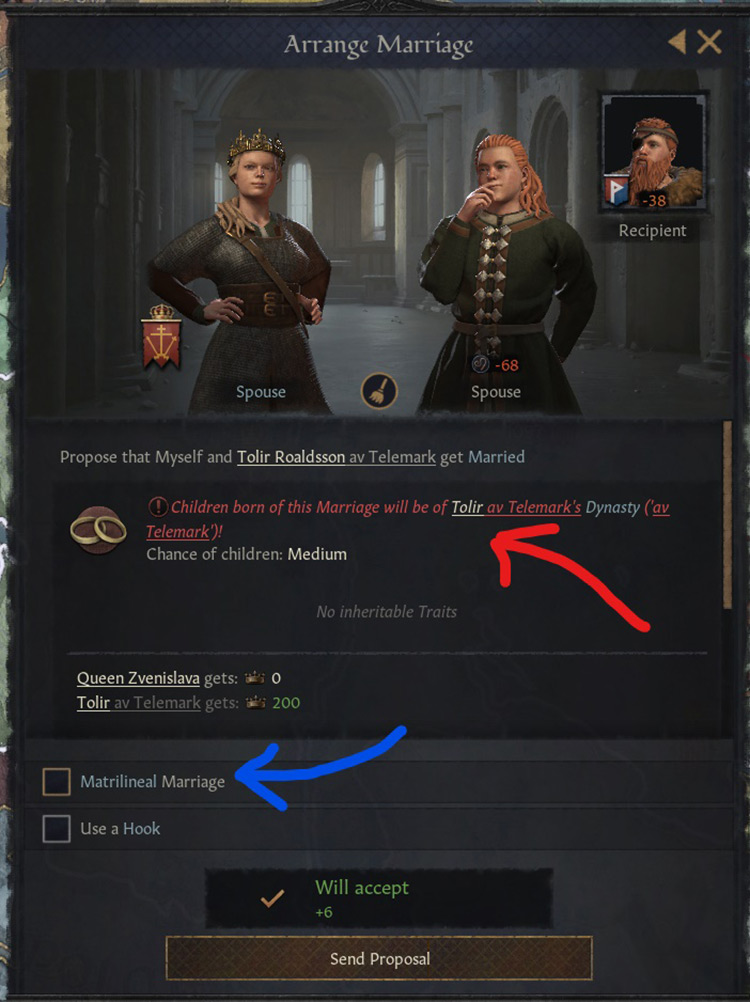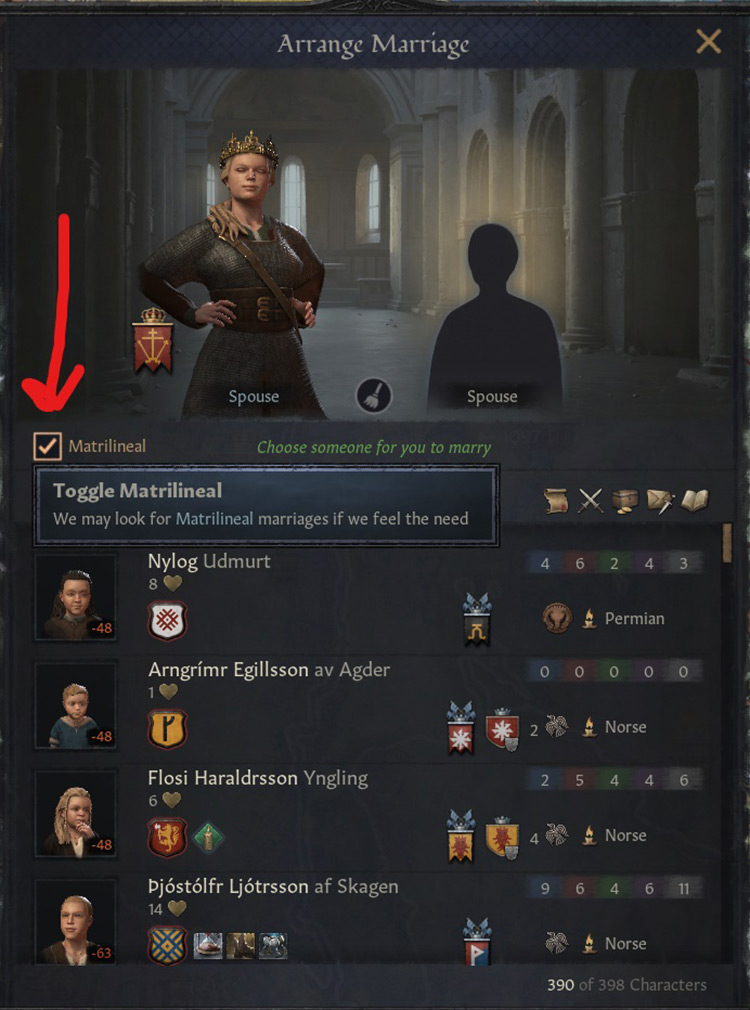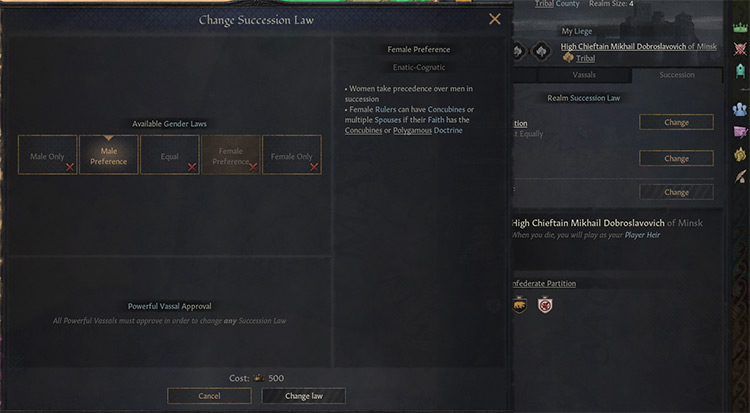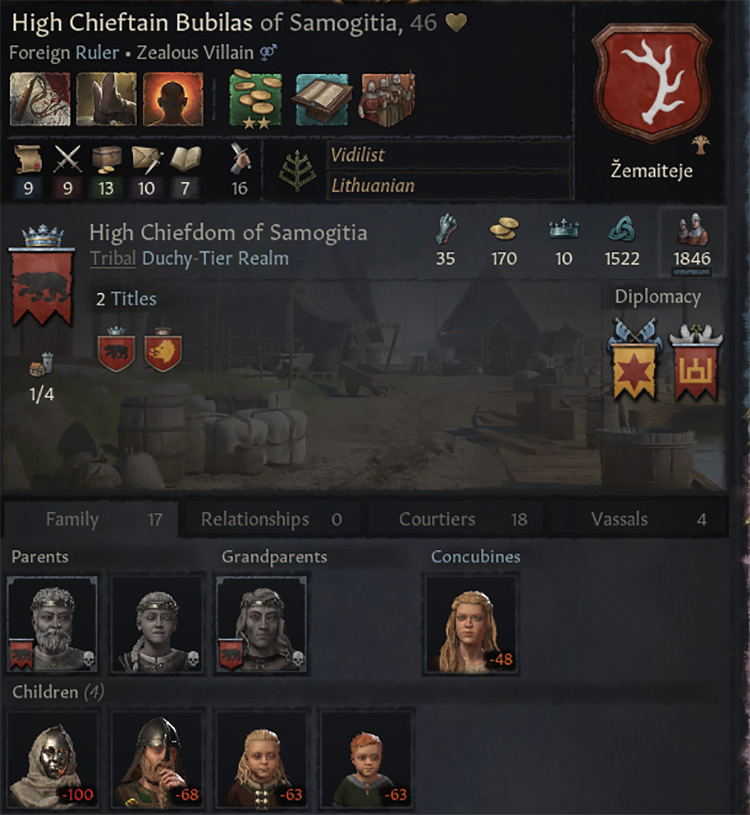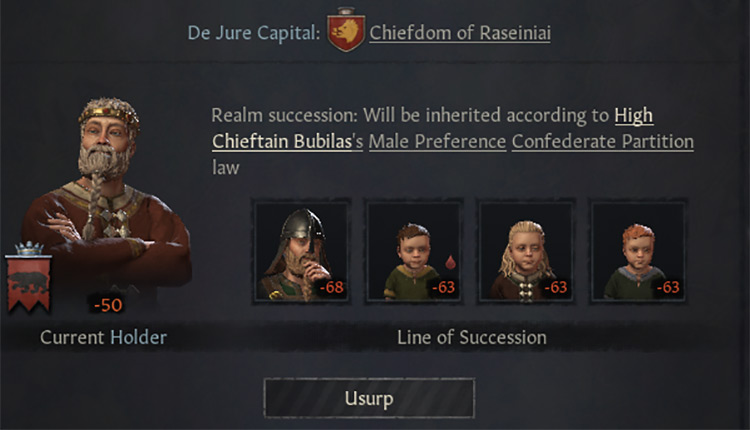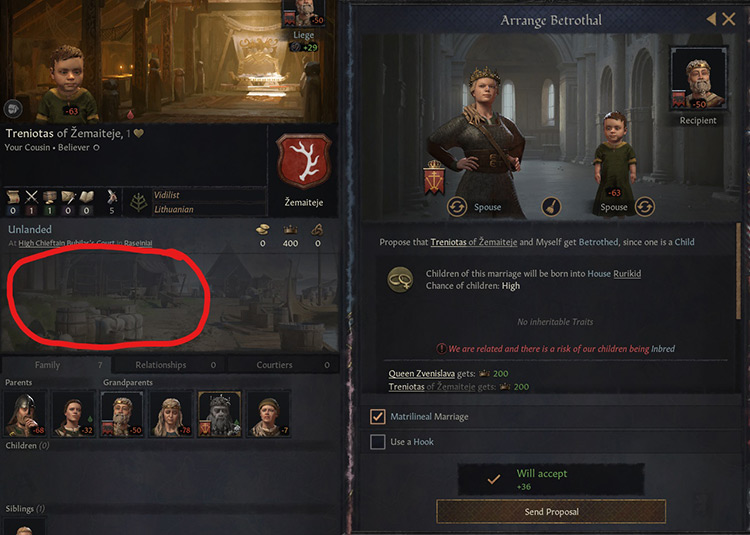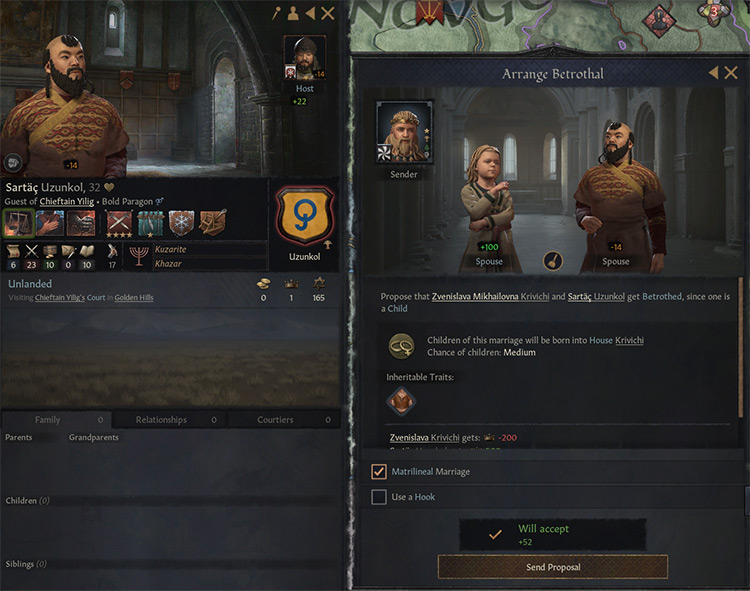The purpose of a matrilineal marriage is that any children that come as a result of the marriage will be of the mother’s family. For some games, this option might be completely ignored. Other times, it will be situational. And for other games it will be essential the entire time.
Matrilineal Basics (How It Works)
As stated above, the way to make a marriage matrilineal is to click the box next to “matrilineal” when you are either looking for a spouse, or when you are setting up a marriage with a particular person. In this example, the matrilineal marriage is not checked. Since I am a female ruler, the game warns that your children will be of your husband’s family. Note: Crusader Kings 3 is a game about your dynasty. So having no eligible heir of your dynasty means you lose! However, as seen below, checking the matrilineal marriage box in this screen isn’t exactly ideal: Once I have clicked the matrilineal marriage option, the acceptance chance of the marriage immediately plummets. Mr. Tolir up there stands to inherit titles from his father. And as such, he won’t choose to accept a matrilineal marriage. You always want your dynasty to have heirs, but so do the AI. The easiest way to find characters that will accept a matrilineal marriage is to check the box while looking for an eligible bachelor, like so: This shows all characters that will accept the offer. And I have 398 men (well, some literal infants as well) to choose from.
Situations Where Matrilineal is Necessary
While you may switch your succession law to make women the preferred inheritors, the actual time it takes to get to this step is long. Lots of innovations have to be obtained, and you will rarely find yourself transitioning to it. However, some realms start with the female preference succession law, such as the Duchy of Mutapa in the first starting date. If this is the case, women rulers will be the norm, not the exception, so you will get very used to using matrilineal marriages.
Matrilineal Shenanigans
Shenanigans aren’t necessarily unique matrilineal marriages, but they are a bit simpler given you’ll be marrying a man. It relies on inheritance lines, and the men in the family are usually way further up that list than women. So as shown above, heirs will refuse any matrilineal marriage if they have a choice. However, the AI characters are running checks to see if the character is an heir – not to see if they stand to inherit anything at some point. For example, take the family below: This ruler has 3 male children, and he has 2 titles. Since the titles are of different levels (a county and a duchy), both will be inherited by the eldest son. Next you want to click on the highest title the ruler holds, and check its inheritance line. His succession line for his duchy title goes:
First to his eldest son Then his eldest son’s son Then back to the current ruler’s two younger sons
In other words, that grandson is 2nd in line to inherit the titles of the current ruler. However: Despite the fact that the titles will be coming to this child, the game doesn’t think of him as the heir to any titles. Due to this, his grandfather is perfectly happy to give me a matrilineal marriage with the child. What does this mean for you though? Well, once that child comes of age and gets married to you, his primary heir will also be your primary heir. So, following succession: Note: #4 and #5 above might switch places depending on who dies first, but it won’t affect anything. The result is expansion without conquest, and your vassals won’t fuss since you gained your titles through rightful succession. In this example it was just a duchy, but you can absolutely do this to kingdoms or empires, though the marriage acceptance chance will likely be lower. Also, the AI isn’t stupid, and if it notices what’s going to happen, it’s liable to cancel the marriage arrangements. So it’s best to already be married before your spouse becomes the official heir, or get rid of his father and grandfather in quick succession (murder).
Minor Uses for Matrilineal Marriage
And finally, you can use matrilineal marriages with your female family members even if they don’t stand to inherit anything. This has the benefit of getting your family tree larger if you’d like it to be – but it can also bring in people from outside your realm. For example: This guy is willing to have a matrilineal marriage with my daughter, and he has a great martial statistic. Once the marriage happens (when my daughter comes of age), he will join my court and I can use him as my court’s marshal. I personally also use this method to get more of my dynasty in positions of power within my own realm. If I can’t give one of my daughters a title due to gender inheritance laws, I can instead give it to her husband that she has a matrilineal marriage with. The children of this marriage will be of my dynasty. So once the husband dies, a member of my dynasty will be the next holder of his titles. You may not see much use for this type of marriage in most of your games, but it can be incredibly useful when you play around with it. So do some exploring of your own and find out what it can do for your next CK3 session!
